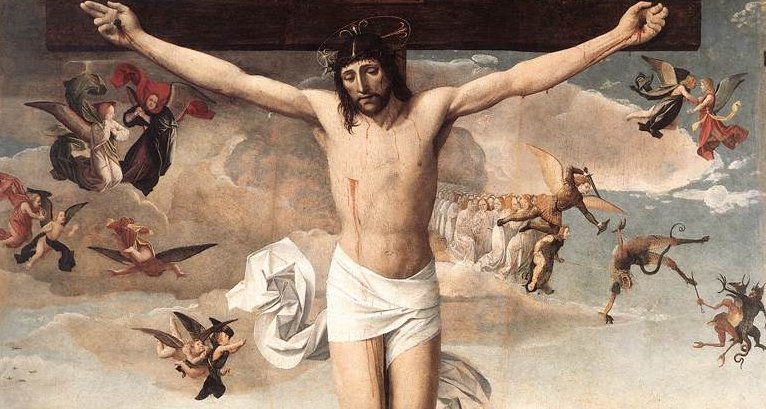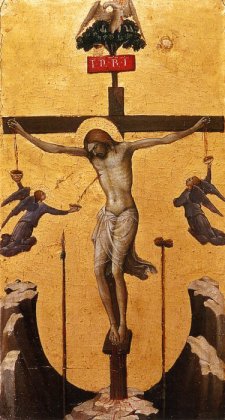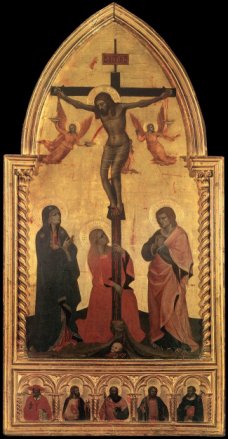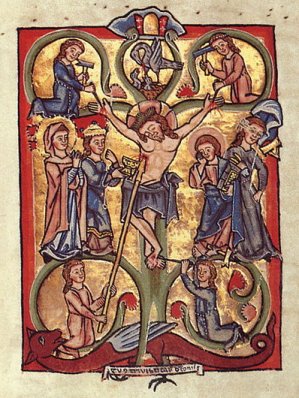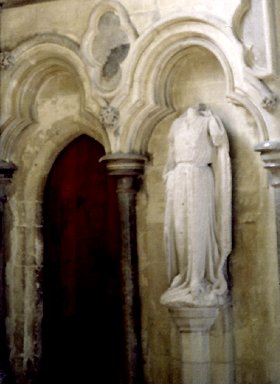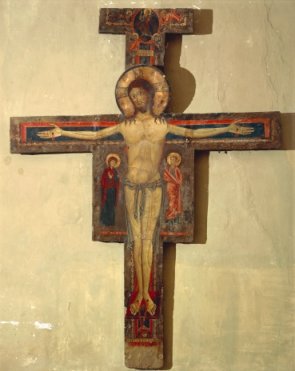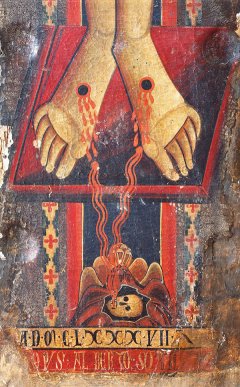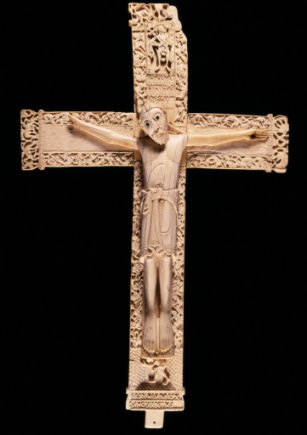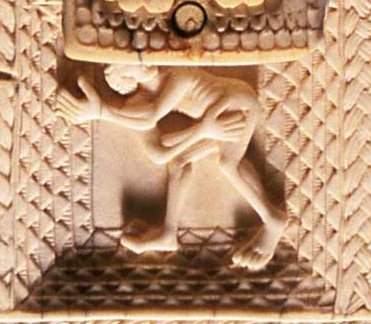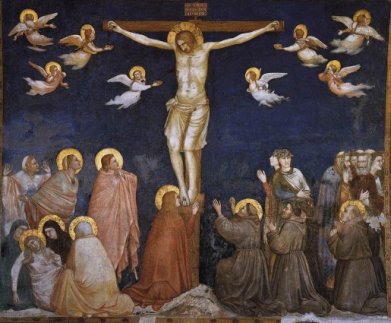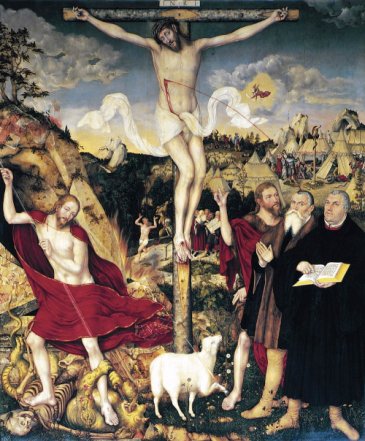|
The Crucifixion - angels, saints and donors |
|
This includes those non-humans who may have been there - angels, devils, and so on, and the anachronistic inclusion of people in crucifixion scenes such as saints and donors. Angels often appear in Crucifixion scenes, particularly early ones. We have already come across some of them on the previous page. There is a good deal of angelic and devilish goings on in this detail from a Crucifixion by the French painter Josse Lieferinxe in the Louvre. On Christ's left, St Michael is busy dealing with those devils. |
|
|
|
|
| Sometimes we see the collecting the blood of Christ by angels, as in these two paintings from the Uffizi, by Lorenzo Monaco (left) and Nardo di Cione (right) | |
|
|
|
| Ecclesia
and Synagoga This page from the Scherenberg Psalter of 1260 |
|
|
|
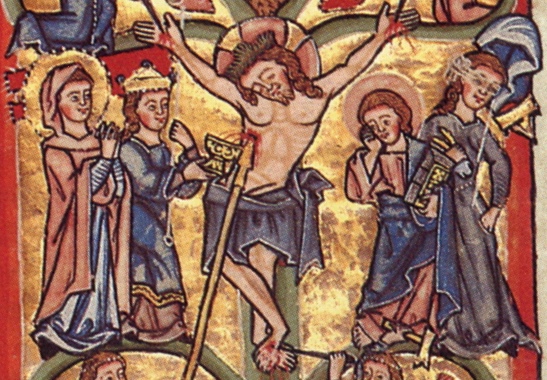 |
| Images of Ecclesia and Synagoga occasionally appear as statues. This one, identified as Ecclesia, was found buried in the grounds of Winchester Cathedral. Its poor condition was almost certainly caused by Civil war iconoclasm. It is now on show in the cathedral. No one has yet found the Winchester Synagoga - it would seem that Ecclesia has triumphed once again. | |
|
|
|
| Adam Golgotha is 'the place of the skull' and a skull often appears at the foot of the cross. Traditionally, this place was also the burial pace of Adam, and so this can be thought of as his skull. As the blood runs down the cross, so Adam is redeemed, as is shown in this early crucifix by Alberto Sotio in the Duomo at Spoleto. Below that is the crucifix of Ferdinand and Sancha, c1063, a reliquary containing wood from the True Cross now in the National Archaeological Museum of Spain in Madrid. The detail on the right shows a revived Adam reaching out for the blood of Christ. |
|
|
|
|
|
|
|
| Saints -
and others. Paintings that include saints and others who lived long after the crucifixion are clearly non narrative, and have a particular message to impart. The fresco on the left below comes from San Francesco Lower Church at Assisi. Three Franciscans led by St Francis himself worship the cross, underlining the idea of Francis as the Second Christ. the picture on the right is a much more complicated affair, and the theology might well be considered somewhat heavy handed. It is by Lucas Cranach the Younger. In the background are reminders of sin and redemption; the expulsion from Eden, Moses and the Brazen serpent, the Annunciation. Christ appears on the left taking on St Michael’s job of dragon slaying. But who is on the right? The figure closest to Christ is straightforward – John the Baptist points both to Christ and to the Lamb of God. Next to him stands Lucas Cranach the Elder, the artists father, on to whose head the blood of Christ is falling. To his left stands none other than Martin Luther, pointing to an appropriate passage from his translation of the Bible. The message? The redemptive blood of Christ is available to all and does not need to be mediated by the priesthood. |
|
|
|
|
